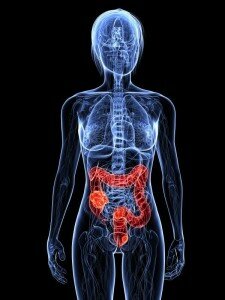
Anal fissures can be painful, sometimes to the point that they disrupt everyday activities. Your doctor probably first recommended the typical treatment, consisting of a regimen of stool softeners and medicated creams. If this does not alleviate your symptoms and allow the fissure to heal within a couple of weeks, however, you may need to consider a lateral internal sphincterotomy to find lasting relief.
Why Is A Lateral Internal Sphincterotomy Necessary?
The lateral internal sphincterotomy (LIS) is the gold standard treatment for anal fissures that have not responded to less invasive treatments, or those that recur. After a lateral internal sphincterotomy, the risk of recurrence is greatly reduced over anal fissures treated with medicated creams alone.
During this surgery, the internal sphincter is cut, which allows it to relax. The tension in this muscle is what causes the initial tear, as well as what prevents the fissure from healing completely.
When surgery is required for an anal fissure, a lateral internal sphincterotomy is the preferred procedure. There is a low risk of complications from this surgery, while other procedures used to address anal fissures have an increased risk of recurrence and incontinence. Recovery times for these alternative procedures are also dramatically longer than the time required after a lateral internal sphincterotomy.
What Can I Expect During A Lateral Internal Sphincterotomy?
It is normal to feel apprehensive when you learn that you will need surgery, but knowing what to expect can lessen the stress on both you and your loved ones. A lateral internal sphincterotomy is a quick, simple procedure that typically offers almost immediate relief for many patients.
Your surgery will most likely be done under general anesthesia. This is the preferred method, although some procedures are completed under regional or local anesthesia with IV sedation. This decision will most likely be made by your doctor, based on your health and risk of complications from anesthesia.
Once you are asleep or sedated, the surgeon will make a small incision in the skin just inside your anus. Using this incision, a scalpel will be used to cut the internal anal sphincter, one of two muscles that control the anal opening. This cut will immediately relax the sphincter, preventing it from spasming and allow the fissure to begin healing.
The incision made in your skin may be left open to heal from the inside out, or stitched closed to speed healing. This usually depends on the surgeon’s personal preference, and makes little difference in aftercare.
After surgery is completed, a sterile dressing may be placed inside your anus in order to protect the surgical site and help stop any bleeding that may occur. This will most likely be removed before you are sent home, or will come out during your first bowel movement or bath.
How Will I Feel Immediately After The Procedure?
Because a lateral internal sphincterotomy is most commonly an outpatient surgery, you will be taken to a recovery room immediately after the procedure. There, you will wake up from the anesthesia and rest for several hours until you are fully conscious. Then, you’ll be released to go home.
Most people require at least one night at home to recover from the anesthesia before they feel up to doing anything aside from resting. In addition, some discomfort should be expected. Your doctor will probably give you pain relievers to use, although some will simply recommend over-the-counter medications. This is usually enough to greatly lessen the pain, and some patients even report that the post-surgery pain is actually less than the original pain from the anal fissure.
Once you make it through the first 24 to 48 hours, you may find that the pain is only severe when you are having a bowel movement. To lessen this pain, your doctor will probably recommend several dietary changes to help soften your stools. Recommendations may include:
- A high-fiber diet
- Drinking plenty of fluids
- Using stool softeners
- Taking warm sitz baths
While you may see small drops of blood on the toilet paper after a bowel movement for a week to ten days after surgery, this is normal. Abnormal signs to watch out for include a high temperature, heavy bleeding or severe pain in the area where the incision was made. If you experience any of these symptoms, it is important to notify your doctor as soon as possible.
How Long Until I Have Fully Recovered from Surgery?
Many people, even those who have had the procedure, do not understand that a lateral internal sphincterotomy does not actually repair the anal fissure. Even after this surgery, the tear must heal on its own. The sphincterotomy simply makes this possible, and speeds the process along. Even so, recovery from both the initial tear and the surgery often happens surprisingly quickly.
Those who undergo a lateral internal sphincterotomy rarely miss more than a week of work, and most people can return to their normal lifestyle after two weeks. If you live an active lifestyle or work in a field that requires heavy lifting or a large amount of twisting and turning, you may have to reduce some activities for up to six weeks. Within six weeks, most people have fully healed.
Next, read about Will I Need a Sphincterectomy or a Fissurectomy?









